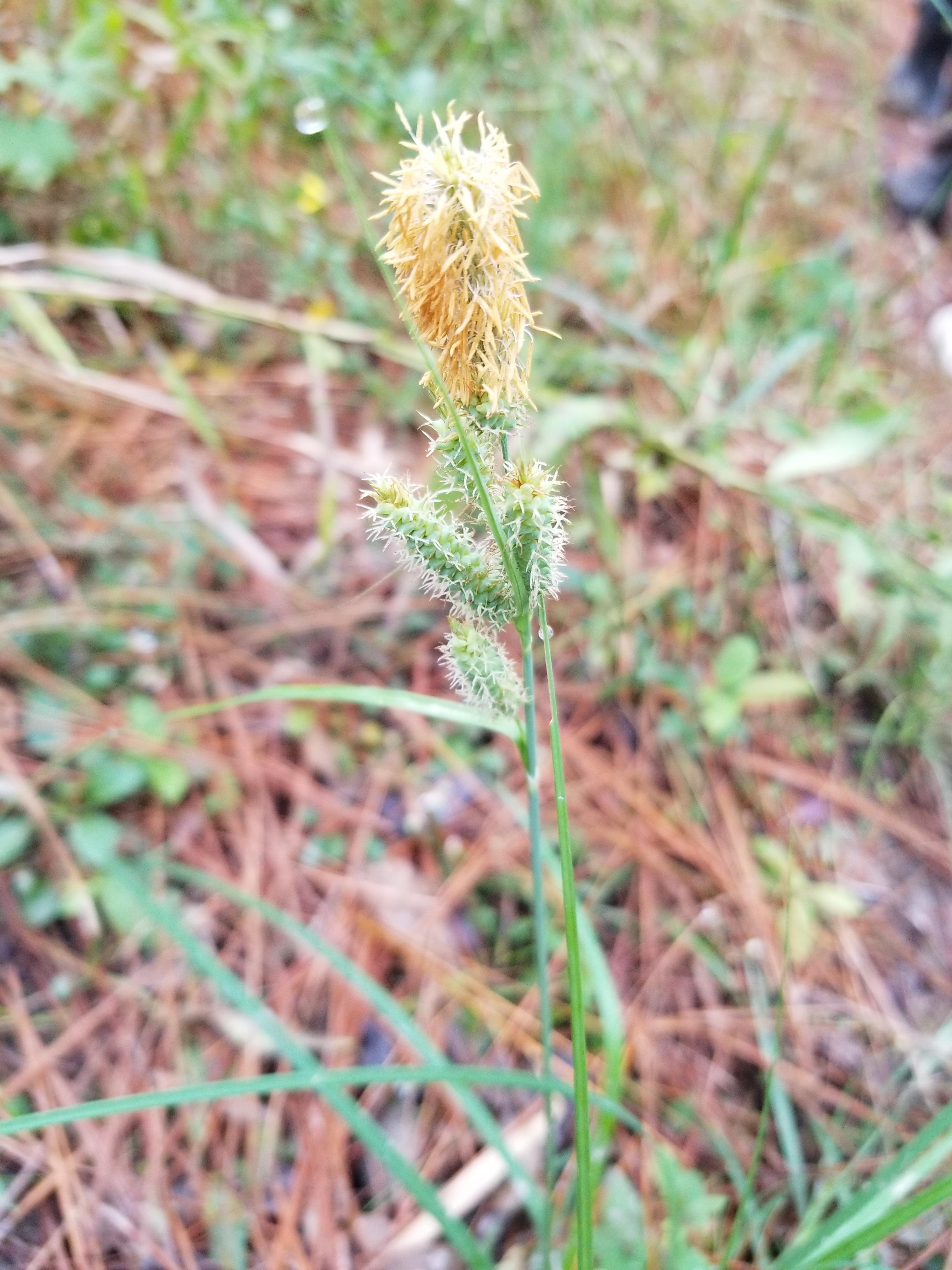Carex Glaucescens on:
[Wikipedia]
[Google]
[Amazon]
 ''Carex glaucescens'' is a perennial
''Carex glaucescens'' is a perennial
 ''Carex glaucescens'' is a
''Carex glaucescens'' is a
 ''Carex glaucescens'' is a perennial
''Carex glaucescens'' is a perennial sedge
The Cyperaceae are a family of graminoid (grass-like), monocotyledonous flowering plants known as sedges. The family is large, with some 5,500 known species described in about 90 genera, the largest being the "true sedges" genus ''Carex'' wit ...
that belongs to the family Cyperaceae
The Cyperaceae are a family of graminoid (grass-like), monocotyledonous flowering plants known as sedges. The family is large, with some 5,500 known species described in about 90 genera, the largest being the "true sedges" genus ''Carex'' w ...
. The common name of this sedge is the southern waxy sedge due to the blue-grey, waxy appearance of the sheaths and fruits. The term "glaucous" means "gleaming" or "grey" in Latin; the specific epithet of ''C. glaucescens'' is derived from this term. ''Carex glaucescens'' is a native plant in North America and is an obligate wetland species in the Atlantic and Gulf Coastal Plains, Eastern Mountains and Piedmont, and the Great Plains.
Description
 ''Carex glaucescens'' is a
''Carex glaucescens'' is a graminoid
In botany and ecology, graminoid refers to a herbaceous plant with a grass-like morphology, i.e. elongated culms with long, blade-like leaves. They are contrasted to forbs, herbaceous plants without grass-like features.
The plants most ofte ...
, meaning they have a grass-like appearance. This species begins blooming in the early summer months, and begins developing fruits into the late summer months around July and August. ''Carex glaucescens'' features a staminate
The stamen (plural ''stamina'' or ''stamens'') is the pollen-producing reproductive organ of a flower. Collectively the stamens form the androecium., p. 10
Morphology and terminology
A stamen typically consists of a stalk called the filam ...
spikelete at the top of the plant which fertilizes the pistillate
Gynoecium (; ) is most commonly used as a collective term for the parts of a flower that produce ovules and ultimately develop into the fruit and seeds. The gynoecium is the innermost whorl of a flower; it consists of (one or more) ''pistils'' ...
spikelets below it. The fruits are born on pendulous pistillate spikelets which are covered by translucent papilla
Papilla (Latin, 'nipple') or papillae may refer to:
In animals
* Papilla (fish anatomy), in the mouth of fish
* Basilar papilla, a sensory organ of lizards, amphibians and fish
* Dental papilla, in a developing tooth
* Dermal papillae, part of ...
, which gives the fruit sac its glaucous appearance. Inside the fruit sac are ellipsoid achenes, the seed of the plant.
References
{{Taxonbar, from=Q15571829 glaucescens